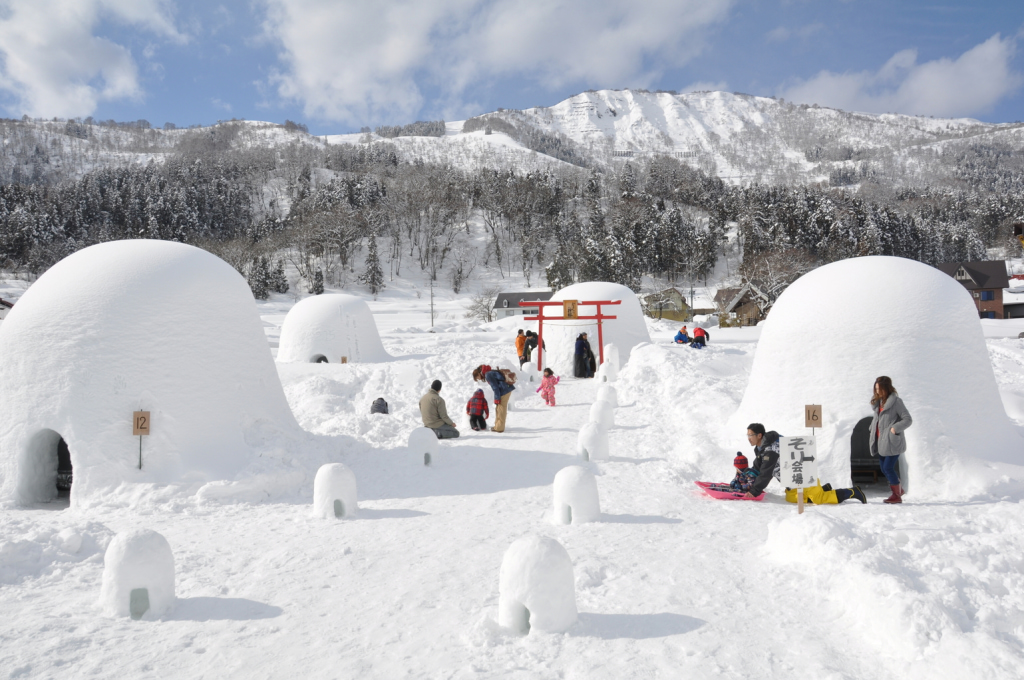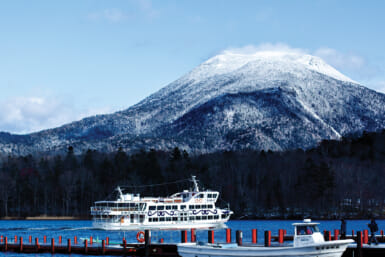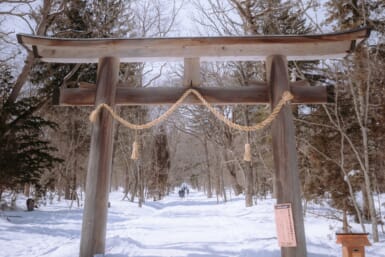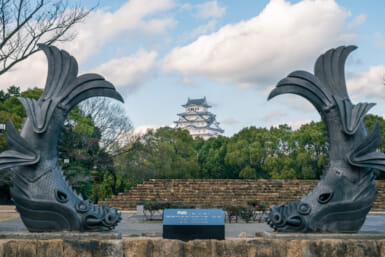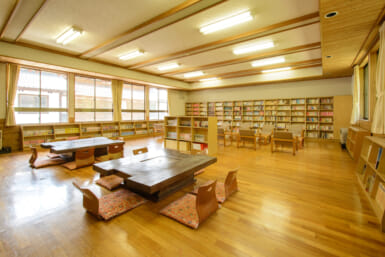Thanks to geography, northern Nagano offers some of the best skiing in Japan. Storms roll off the Sea of Japan and deposit high amounts of powder snow in the mountains. As a result, acclaimed ski resorts such as Shiga Kogen, Nozawa and Myoko are ski havens. Shiga Kogen is the largest ski resort in Japan with 18 interlinked ski resorts and nearly 50 lifts and gondolas. Nozawa is also well known for its many natural hot springs and Myoko, founded in the 1930s, is one of the oldest ski resorts in the world. As well as top-notch skiing, these resorts offer numerous non-skiing things to do for those who don’t like to or aren’t able to ski, as well as skiers who’d like to take a break during a longer winter vacation in Nagano.
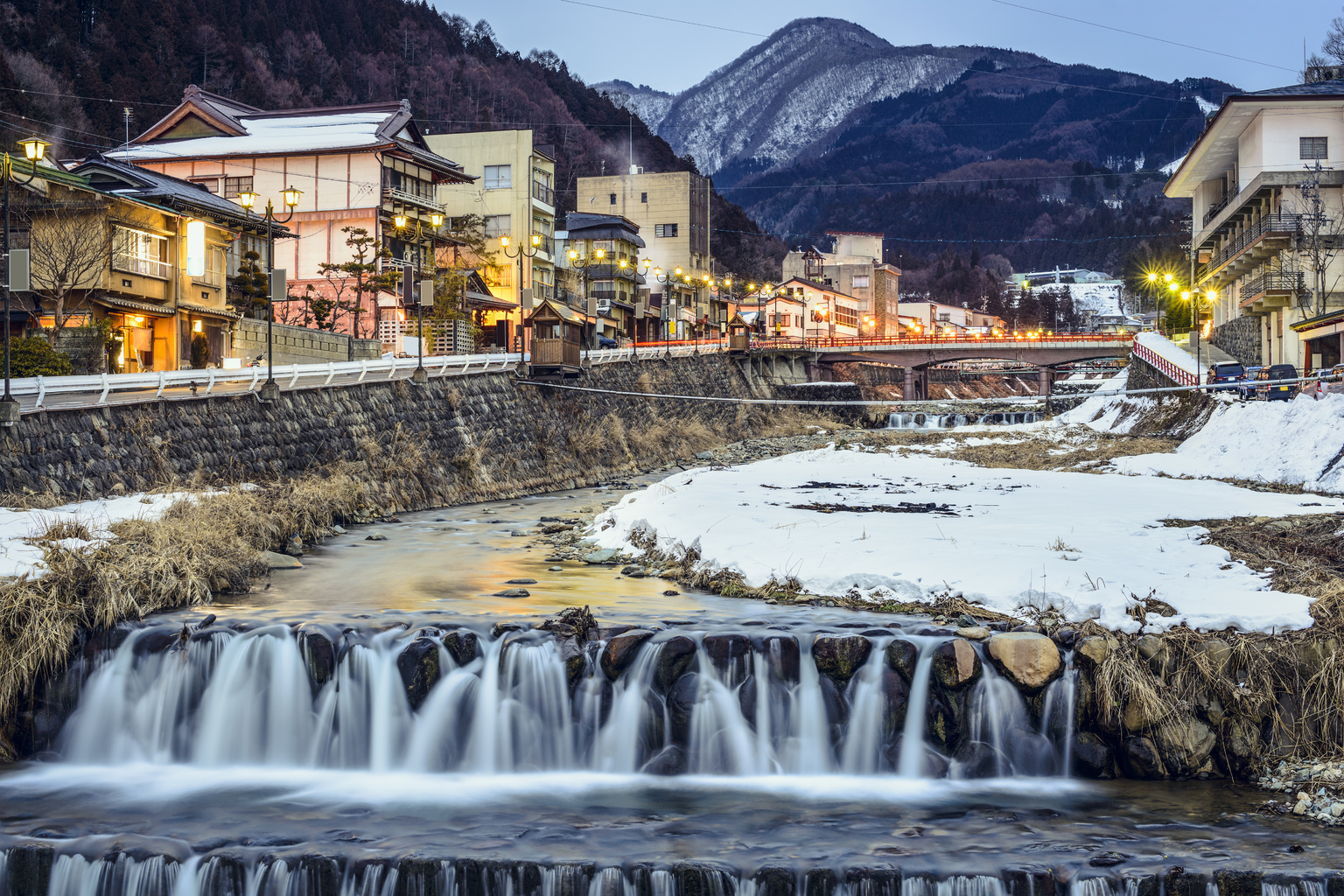
Shibu Onsen
Soak in a Historical Onsen
Whether post-ski or just to enjoy, a hot spring bath is perfect on a cold Nagano winter’s day. The ski resorts also happen to have some of Nagano’s best natural onsen and historical facilities built around them. Here, the onsen experience is more than just a warm bath, it is a historic soak in the middle of the mountains.
Located at the base of Shiga Kogen are Yudanaka and Shibu Onsen villages. These villages date back some 1,300 years ago and have charming historical architecture. Just walking the streets and taking photos is a fun activity, best combined with a soak in an onsen.
Nozawa is full of unique historic onsen villages too. It is known for its natural hot spring water communal baths called soto-yu. There are 13 prominent soto-yu bathhouses within walking distance of each other. The Nozawa hot spring water is naturally very hot so people usually soak for a short time. Soto-yu baths are free to enter, but donations are welcome.
Myoko established itself as an onsen village long before it became a ski resort. Seki Onsen has welcomed visitors since 1729 and Akakura since 1816. These are two of many more Myoko hot spring areas with water rich in minerals and historic bathhouse buildings to visit.
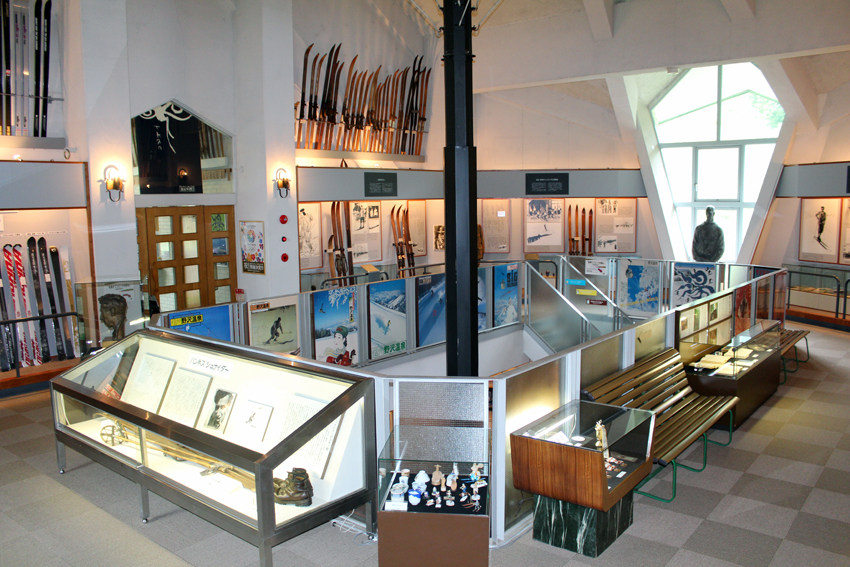
Courtesy of Japan Ski Museum
Visit a Museum
Museums are another way to escape the cold and take a break from skiing, while learning and exploring.
At the base of the Kanbayashi Ski Run in Shiga Kogen Ski Resort is the Shiga Kogen Roman Art Museum. The museum commemorates the Nagano Olympics and Paralympics and exhibits iridescent glass products, such as bottles and vases, from the Roman Empire. It also has a collection of art from the Edo, Meiji and Taisho eras of Japan. The museum building is a destination in itself, as it’s the work of famous architect Kisho Kurokawa who designed the Nakagin Capsule Tower.
In Nozawa, the Japan Ski Museum explains the history of the sport and has a collection of antique skis and equipment. It also has memorabilia from the Nagano Olympics in 1998.
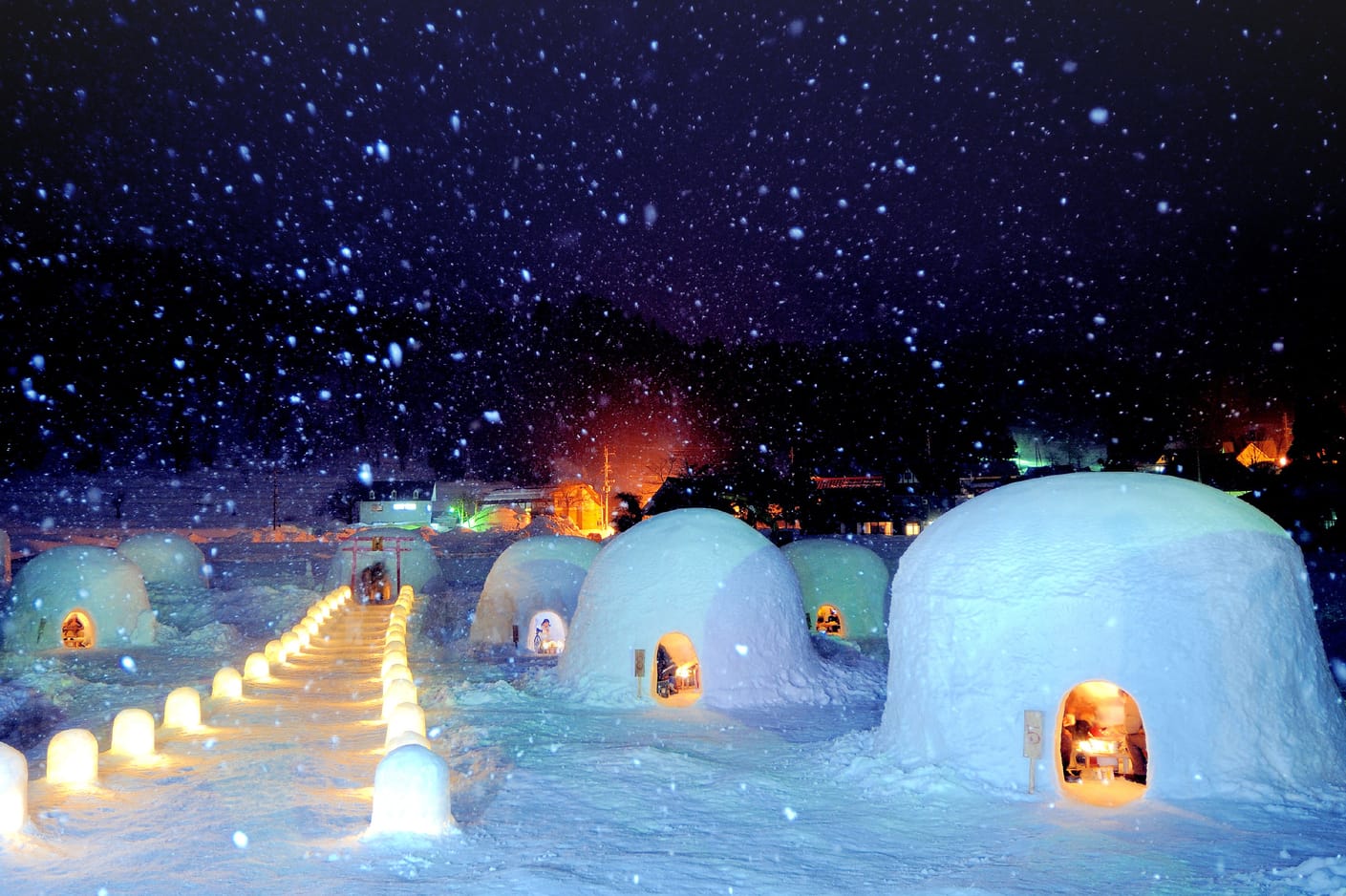
The Kamakura Snow Hut festival in Iiyama
Attend a Seasonal Festival
In snowy areas, the winter festivals are as dynamic and fun as summer festivals in the cities. If your trip to Nagano coincides with a local festival, it’s definitely worth a visit.
In Nozawa, one of Japan’s top three fire festivals called Dosojin takes place on January 15. Dosojin, rooted in local tradition, has 25-year-olds at the bottom of the shrine and 42-year-olds at the top trying to defend the shrine. But in the end, they lose and then leave the shrine which goes up in flames and becomes a big bonfire.
Around the same time, Myoko has the Dondo Yaki Festival of Fire, which is actually common throughout Japan but adds the extra touch of fireworks.
Very close to Nozawa is Iiyama which has several fun winter festivals too. In February it holds the Kamakura Snow Huts festival, with snow huts that become little restaurants serving a local hot pot soup. Iiyama also holds a snow festival during which more than 100 snow sculptures and Japanese lanterns are scattered throughout the town.
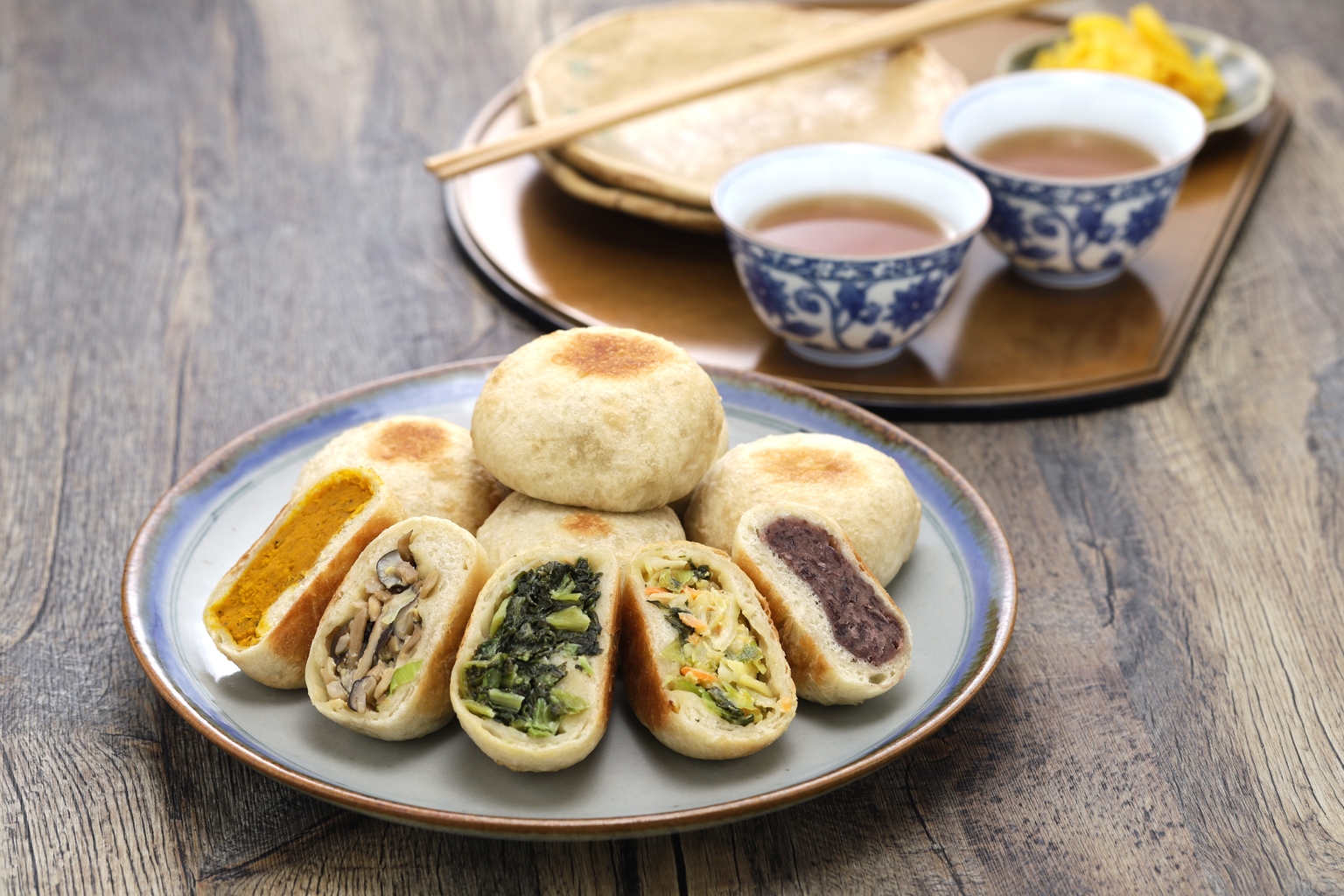
Oyaki, one of Nagano’s most recognizable local foods
Eat Local Nagano Food
When not limited by the predictable menus at ski slopes, food exploration is an adventure. To learn about local tastes in the Nagano area, try some famous local dishes, usually sold at food stands or specific restaurants.
One of the best examples is oyaki, a steamed and baked bun with different kinds of filling: wild vegetables, mushrooms, anko bean paste, pumpkin and more. It’s one of Nagano’s most popular snacks, great for eating on the go. When in Nagano, don’t miss the chance to try soba buckwheat noodles, a well-known dish in all of Japan, but especially tasty in this part of the country.
Throughout the areas of Iiyama, Nozawa and Myoko, another local specialty is sasazushi. Unlike other sushi, the locals prepare this sushi on a bamboo leaf and top it with fish and vegetables.
In Iiyama specifically, they have a local desert only available in winter. Called “banana boat,” it’s a yellow cake full of cream. Nozawa has its own local favorite called Nozawana, a local vegetable that is pickled. It can be found on the side of other dishes or as a filling for oyaki.
Finally, do not limit yourself to food as some of the areas have well-known beer gardens, local sake breweries and acclaimed Nagano wine. Everything tastes better thanks to the mountains and their pristine spring waters.
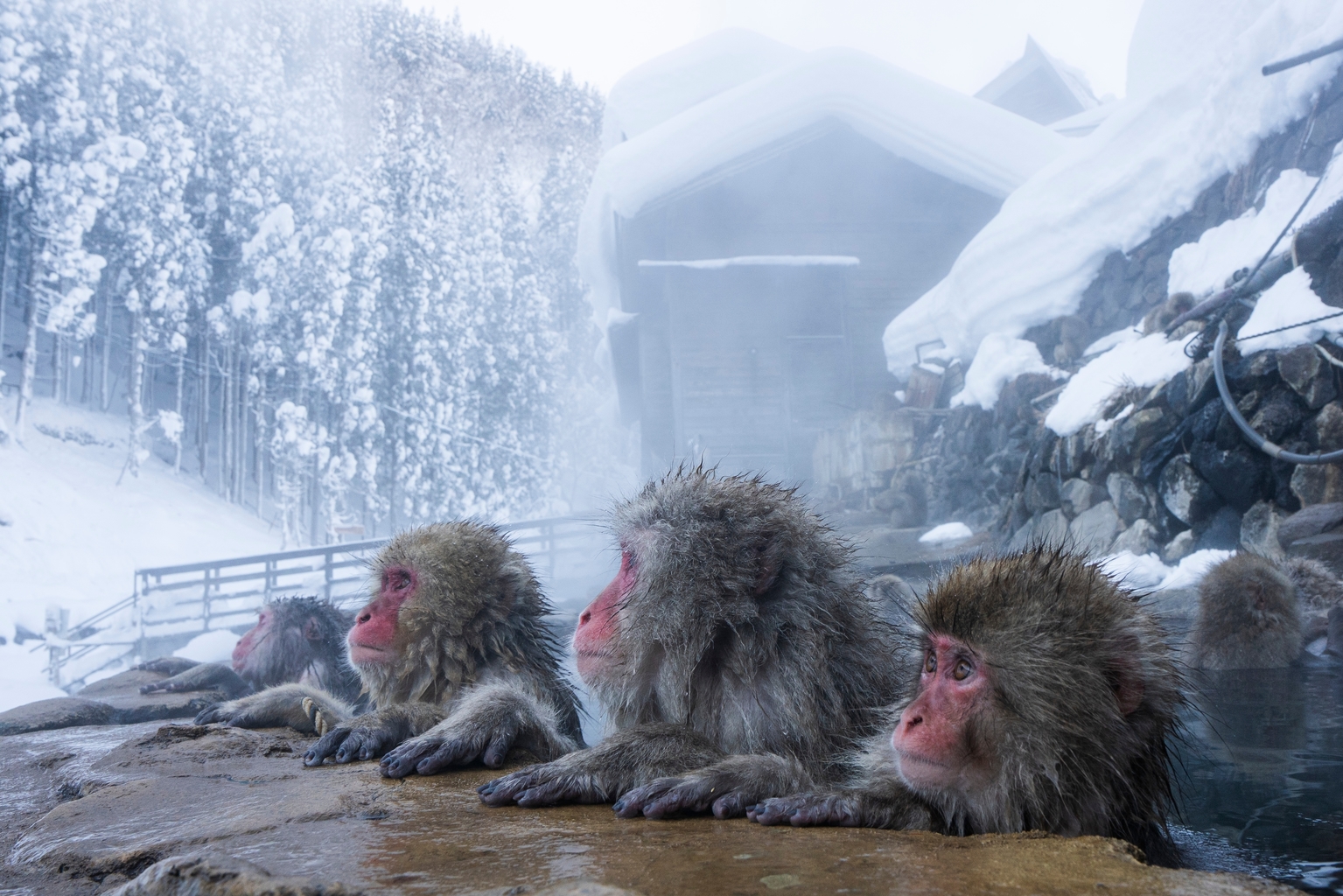
Jigokudani Onsen Snow Monkeys
Go on a Nagano Day Trip
To really escape from the ski resorts, take a day trip to some other attractions in Nagano. The famous Jigokudani Onsen area is where the snow monkeys soak, an image you probably have seen even if you have never been to Nagano. This area is located at the base of the Shiga Kogen Ski Area.
Another great day trip from the ski resorts is Nagano City itself. The most popular historical relic is the national treasure of Zenkoji Temple. Some parts of the temple date back 1,400 years ago. There’s a lot to see as the temple grounds are vast and the streets around it are lined with traditional architecture, cozy restaurants and cafés and many souvenir shops.
The Kawanakajima section of Nagano City is the site of battles that took place about 500 years ago during the Warring States Period. The sites include a temple dedicated to the dead, monuments and statues of heroes of the battles, as well as the actual battlefield. There are also remnants of a castle in the small town of Matsushiro.

